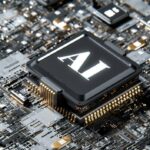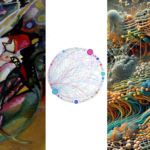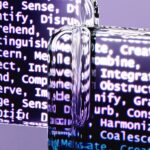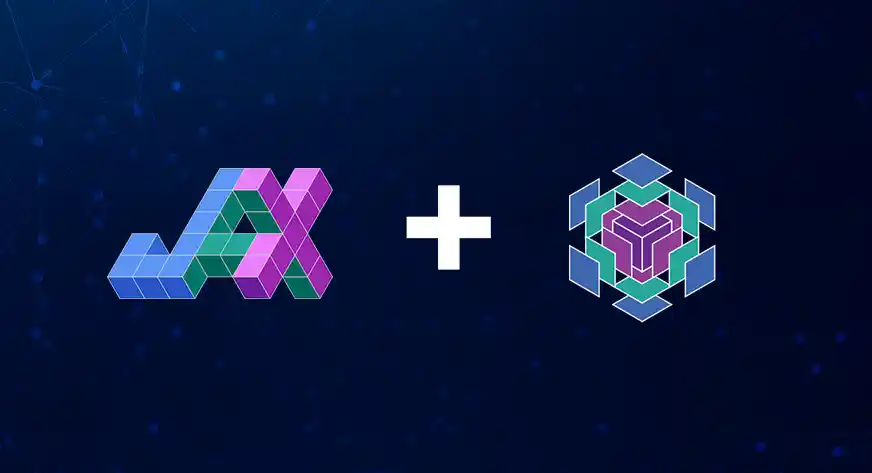In a rapidly evolving technological panorama, the emergence of generative AI projects has redefined how we interact with, create, and experience content. These projects harness the power of artificial intelligence to replicate human creativity and productiveness, spanning from text chatbots to video generators. These generative AI projects stand as a testament to the ever-expanding competencies of AI, shaping a future wherein innovation knows no limits.
Top Generative AI Projects
The groundbreaking generative AI projects that harness technology’s prowess to create content, from text chatbots to music generators, revolutionize industries and creativity. Here are some of the best Generative AI Projects :
Text Chatbot
Text chatbots are AI-generated projects that engage in natural language conversations with users. These AI-driven systems mimic human interactions and offer information, assistance, and help across numerous industries.
Functionality
- Text chatbots use natural language processing (NLP) to understand user input and generate applicable responses.
- They can handle a wide range of queries, from answering FAQs to offering personalized tips.
- Some advanced chatbots make use of machine learning to analyze from user interactions, constantly improving their responses over time. These chatbots may be included in websites, messaging apps, and customer service platforms.
Applications
- 24/7 Availability: Text chatbots offer round-the-clock assistance, offering instantaneous responses to user queries, even outside of working hours.
- Scalability: Chatbots can deal with multiple conversations concurrently, ensuring enhanced customer service without long waiting times.
- Consistency: Chatbots supply steady responses and information, reducing the risk of human mistakes and inconsistencies.
- Cost-Efficiency: Implementing chatbots can save costs by lowering the want for tremendous human customer support groups.
- Quick Information Retrieval: Chatbots can quickly retrieve applicable information, saving users time compared to manual searches.
Example: Weobot: Mental Health Bot
Youtube Video Summarizer
A YouTube video summarizer is a generative AI tool that extracts key content from videos, condensing lengthy content into concise summaries. This technology holds immense value for content creators, researchers, and viewers by presenting efficient access to video information.
Functionality
- YouTube video summarizers employ audio transcription, image analysis, and natural language processing (NLP) techniques to investigate video content.
- They identify critical segments, keywords, and visual cues to generate a condensed summary that captures the video’s essence. These summaries usually consist of key factors, topics discussed, and timestamps of relevant sections.
Applications
- Time-Saving: Video summarizers allow viewers to quickly grasp the primary content without watching the whole video, saving time.
- Efficient Content Creation: Creators can reuse summarized content for promotions, social media posts, or presentations.
- Research Assistance: Researchers can review multiple videos in less time, extracting important information for their research.
- Enhanced Accessibility: Summaries cater to people with limited time or attention spans, enhancing inclusivity.
- Content Curation: Summaries help creators figure out relevant videos for their target audience.
Learn More: Creating a Youtube Summariser – Mini NLP Project
Example: The tool by the name YouTube Summarizer is a good example.

Code Generator
The code generator powered by generative AI is a transformative tool that automates the procedure of producing code snippets, scripts, and entire programs. It substantially accelerates software development by offering developers pre-written codes tailor-made to specific tasks and functions.
Functionality
- Code generators use machine learning models to analyze patterns in existing code repositories, programming languages, and coding best practices.
- They can generate code for various tasks, from simple functions to complex algorithms.
- Developers provide input such as programming language, desired functionality, and any particular requirements, and the code generator produces relevant code snippets.
Applications
- Time Efficiency: Code generators substantially reduce development time by presenting ready-made solutions for common programming tasks.
- Consistency: Generated code adheres to coding standards and practices, ensuring consistent code quality throughout tasks.
- Learning Aid: Code generators can assist beginners in learning programming concepts and practices by examining generated code.
- Error Reduction: Automation minimizes human mistakes, as generated code follows established conventions and syntax rules.
- Focus on Innovation: Developers can allocate more time to innovation and problem-fixing instead of reinventing the wheel for routine tasks.
Also Read: 10 AI Tools That Can Generate Code To Help Programmers
Example: FavTutor is an efficient AI code generator available for free use

Image Generator
An image generator is a generative AI project that creates images autonomously, showcasing AI’s capability to imitate human artistic creativity. These generators employ complex algorithms to produce visual content, ranging from realistic landscapes to abstract artwork.
Functionality
- Image generators use deep learning techniques such as Generative Adversarial Networks (GANs) or Variational Autoencoders (VAEs).
- These algorithms learn from big datasets of existing images and generate new visuals by figuring out patterns, styles, and functions.
- Some photograph generators allow customers to input precise parameters to influence the generated content, while others produce original compositions.
Applications
- Artistic Creation: Image generators allow artists to explore novel concepts, styles, and aesthetics that might not have been possible manually.
- Design Exploration: Designers can use AI-generated images to brainstorm thoughts, experiment with variations, and encourage new design directions.
- Content Generation: Image generators produce visuals for advertising and marketing campaigns, classified ads, social media, and websites.
- Training Data: Generated images can augment datasets for machine learning tasks, such as object recognition models.
Example: Dalle 2 is a good example of an AI image generator

Video Generator
A video generator powered by a generative AI project is an innovative tool that creates videos autonomously, transforming the landscape of content creation and storytelling. These AI-driven systems use algorithms to generate visual sequences, animations, or even complete videos.
Functionality
- Video generators use techniques like neural networks, GANs, and reinforcement learning to analyze current videos and learn patterns of motion, scene transitions, and visual elements.
- They then generate new videos based on these learning patterns, often with user-defined parameters to influence content style, duration, and themes.
Applications
- Content Creation: Video generators help content creators produce videos for marketing, social media, and advertising, saving time and sources.
- Storyboarding: Filmmakers and animators can use AI-generated video as a storyboarding tool, visualizing scenes before production.
- Visual Effects: Video generators create complex visual effects, reducing the need for labor-intensive manual editing.
- Educational Content: AI-generated videos help educators develop engaging visual content e-learning platforms.
Example: The online tool Invideo helps generate high quality videos using AI.

Music Generator
A music generator powered by generative AI projects is a transformative tool that composes original musical pieces autonomously. These AI-driven systems harness complex algorithms to understand musical patterns, styles, and genres, producing compositions that vary from classical symphonies to contemporary tunes.
Functionality
- Music generators leverage machine learning strategies, which include Recurrent Neural Networks (RNNs) or Transformer models, to analyze vast collections of existing music.
- They learn musical structures, harmonies, rhythms, and melodic patterns.
- These algorithms then generate new compositions based totally on learned musical information, often considering consumer-described parameters.
Applications
- Composition Assistance: Musicians can use AI-generated compositions as inspiration, constructing upon the generated material to craft unique musical pieces.
- Background Scores: Music generators produce background ratings for videos, movies, and video games, presenting original and mood-appropriate tracks.
- Learning Tool: Students and beginners can learn from AI-generated compositions to research musical theory, structure, and arrangement.
- Exploration of Styles: Music generators enable musicians to test specific genres, styles, and musical elements.
Example: Soundraw is an AI music generator that allows you to generate music that suits your taste.

QR Code Generator
A QR code generator powered by generative AI projects is a practical device that automates the creation of Quick Response (QR) codes, streamlining data sharing and accessibility. These AI-driven systems use algorithms to encode data into QR codes, making linking physical objects to digital content easier.
Functionality
- QR code generators use algorithms to encode various patterns of information, including URLs, contact details, and text, into QR codes.
- Users input the desired data, and the generator converts it into a scannable QR code that QR code scanners and mobile devices can read.
Applications
- Marketing: QR codes are utilized in commercials, flyers, and posters to direct customers to websites, promotional offers, and multimedia content.
- Contactless Transactions: QR codes facilitate contactless transactions, enhancing comfort and protection.
- Information Sharing: QR codes on products, packaging, and signage provide quick access to extra information, product details, or user manuals.
Also Read: Top 10 AI QR Code Generator in 2023
Example: Beaconstac is an online QR code generator that enables users to customize their QR codes.

Article Summarizer
An article summarizer powered by a generative AI project is a valuable device that condenses lengthy content into concise and coherent summaries. These AI-driven structures analyze the content of articles, extracting key information and the most important factors to offer readers an efficient evaluation.
Functionality
- Article summarizers utilize natural language processing (NLP) techniques to analyze the textual content of articles.
- They identify important sentences, key terms, and relevant data. Using these elements, the AI generates a summary that captures the essence of the unique article, while preserving the original meaning.
Benefits
- Time Efficiency: Article summarizers save readers time by presenting a summary of the content, permitting them to determine if the article is worth reading in full.
- Content Curation: Summaries help content creators identify applicable articles for their audience, enhancing content discovery.
- Research Assistance: Researchers can quickly examine the relevance and content of articles before diving into detailed readings.
Example: Quillbot is an efficient article summarizer.

Conclusion
Generative AI projects continuously redefine processes, elevating creativity and accessibility. From coding to content and music generation, they reshape tasks. While challenges persist, generative AI’s trajectory assures an efficient and creative future. Explore this realm further through our Gen AI course, bridging human ingenuity with technology for limitless innovation.
Frequently Asked Questions
A. Generative AI examples encompass text chatbots, video summarizers, image and music generators, and code generators.
A. Generative AI empowers content creation, automates coding, produces art, music, and summaries, and enhances research and design processes.
A. Google utilizes generative AI in some applications, but it’s not solely a generative AI platform; it offers various AI-driven tools and services.
A. Generative AI tools are software or systems that employ artificial intelligence to autonomously create content based on patterns and data, like text, images, music, or code.
By Analytics Vidhya, August 30, 2023.












